A detailed review of Affinity Designer (Mac). Part 2

the First part of the review
This time talk about working the panels. In General, all about the same as in Illustrator. There are a couple of unclear moments, there are a couple of very handy pieces that are not available from larger competitors. Include all or separately in the menu "View->Studio>..."
the
Draw persona
the
layers Panel (Layers)
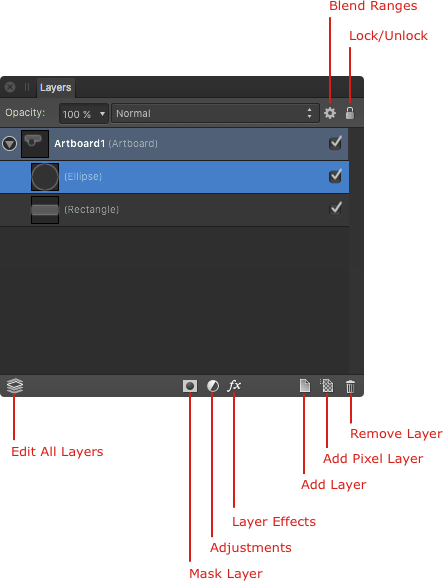
Top left to right: layer opacity, blending mode, the blending ranges of the (read more slightly lower), lock the layer. Layer transparency can be changed with digits from 0 to 9 (as in Photoshop or Sketch), so the bar for it to go not necessarily. For the blocking layer also has its key.
Bottom left to right: auto select layer, masking, layer settings, effects, a new layer, a new pixel layer, delete a layer.
Auto select layer: if pressed, choose the layer by clicking on the canvas; if pressed, select the layer manually in the panel. Let me clarify that it works with layers that contain objects. Inside the layer the objects are always selected by clicking on the canvas and in the layers.
Mask — Clipping Mask just like from Adobe, not on top of one layer, and on top of all that bottom. She also pixel — you can draw with a brush.
Settings (Adjustments) — layer with different settings:
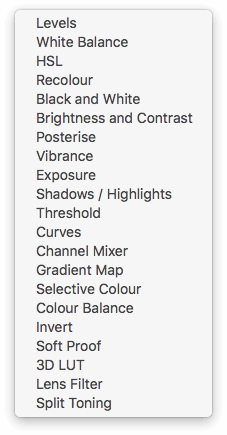
In fact, it is familiar to us Windows color settings, levels, channels and other things. Superimposed layer, so they can drive the same way as regular layers, and twist at any moment.
For example — settings "Selective Colour":
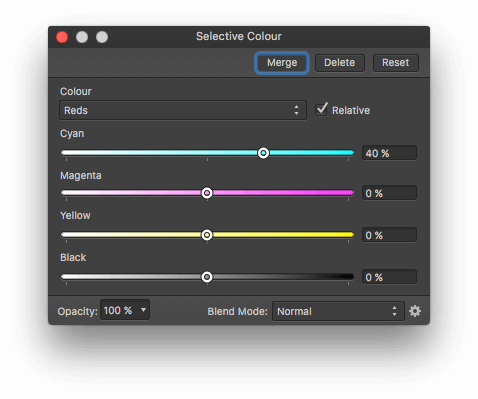
Layer effects — also like all other people
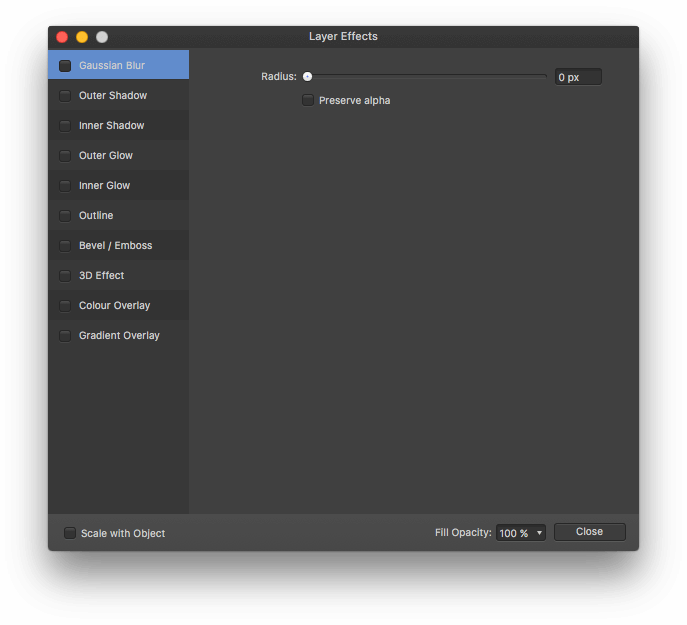
The button "New layer" add vector layer.
"New pixel" layer adds the layer on which you can draw in the "Pixel persona".
Well, with the basket are all clear.
But the ranges of the mix (the blend ranges) I honestly do not understand. I myself am this thing is not in use in other programs this is not seen. It seems that it somehow controlled the "transmission" layer. But here we have not just a blending mode (Multiply, Overlay, Soft Light and all that), but something like mixing and changing the opacity at the same time.
The window ranges of mixing:
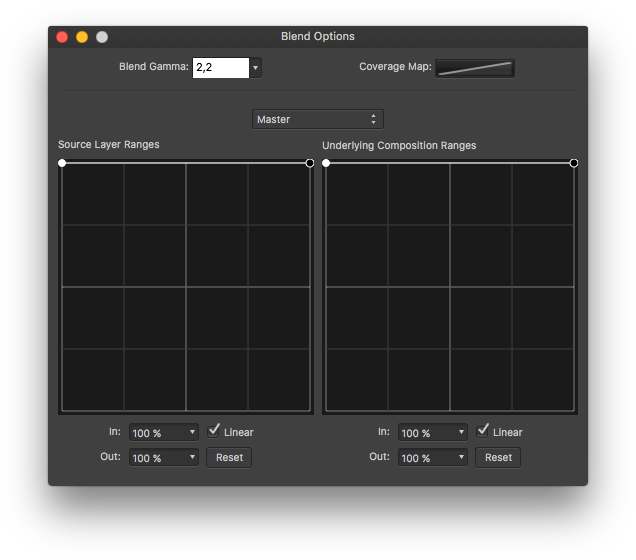
the
the thumbnails (Snapshots)
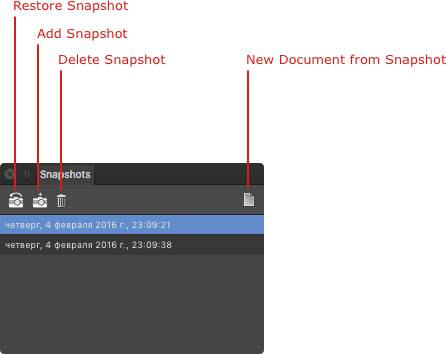
In this panel you can save something like backups or versions of the same document. The buttons from left to right: restore snapshot, take a new snapshot, delete the new document from the snapshot. In principle, the names of all clear. When you do a new snapshot, you will be asked what to call him. By default, the Designer calls the images by creation time.
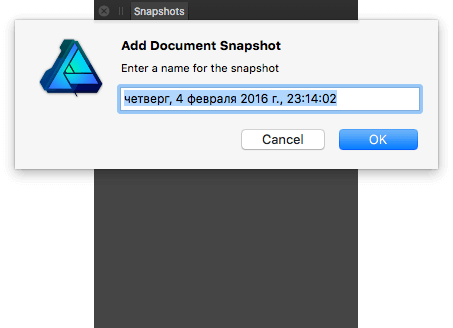
the
History (History)
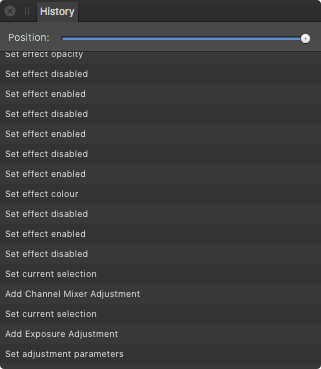
All clear: return to action on click or slider. The designer is able to save history in the document — i.e. you can open a file of a hundred years ago and all the action in the story will "live". But to do this, click the thing in the menu:
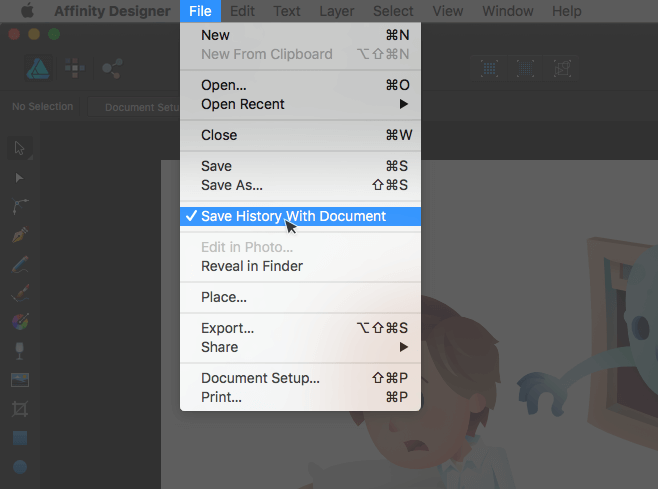
the
Brush (Brushes)

Except for the category selection and the brush panel allows you to create your own category and brush, edit, and delete finished, import/export (however, the format of here — .afbrushes)
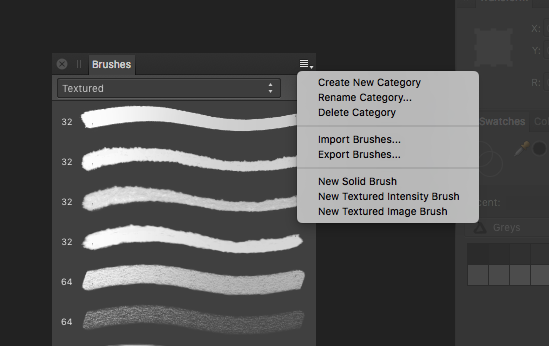
the
Transformation (Transform)

You can select a snap point of an object (i.e., to consider the coordinates of the edges or from the centre), to improve and to "link" the sizes, coordinates, angle, and shear (skew)
the
Navigator (Navigator)

If you have used Photoshop or Illustrator, you will learn and this thing. And works exactly the same as the other. The zoom slider has a maximum of 1000%, but if you need more, increase "plus" — it has no limit (you can still the keyboard and mouse of course).
The Navigator has an "Advanced" mode (menu top right) where you can set waypoints, view — View Point. Set the zoom, save View Point 1, then put another scale, save, View Point 2. And then you can switch between these "points" in the Navigator. You can specify your name.
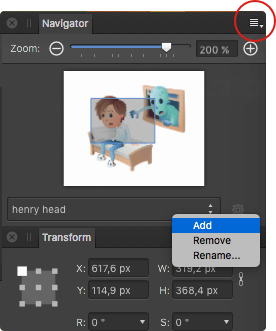
Works like this:

the
Effects (Effects)
Same layer effects, in a separate panel. Ie you can work with them or from the layers panel, or from this.
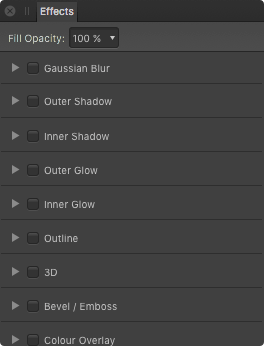
the
Styles (Styles)

Object styles. You can only select an object, save the style, then select a different object and apply the style first. To replace or update an existing style is not. Not a very useful thing for me is to copy/paste object styles get faster hot keys (Cmd+C -> Cmd+Shift+V).
Menu allows you to create a category of styles, delete/rename categories, import/export styles (in your format .afstyles), and, in fact, to make a new style from selected object.
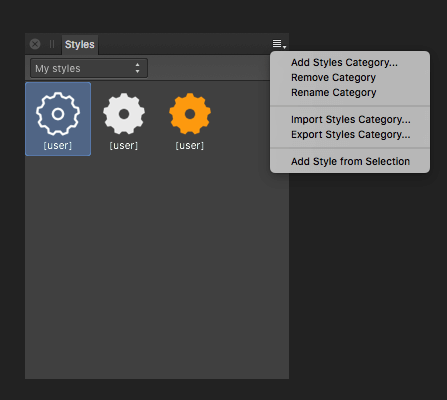
the
Stroke (Stroke)
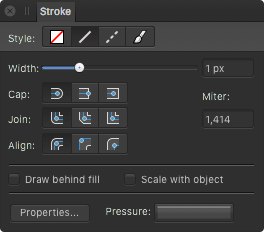
Icons on top: no stroke, the stroke line stroke with a dotted line, inking with a brush. On the connection parameters, fillets, and location of the stroke.
The checkbox "Draw behind fill" includes the overlap of the fill stroke (if stroke center or inner edge):

The "Scale with object" — change the stroke size with the resize object.
The button "Properties..." opens the properties panel for the stroke. The stroke will switch to a brush — the only brush you can configure these parameters.
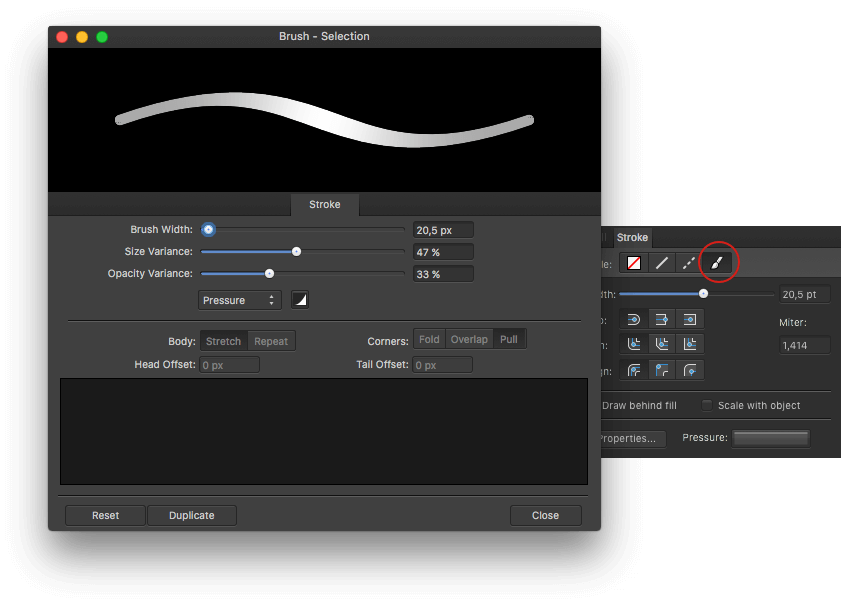
There is another interesting button is "Pressure". Opens setting the thickness of the stroke. The Illustrator is implemented in a tool, here in the form of a curve here. Not immediately very obvious the running thing, but you can get used.

Profiles you can save, load and delete.
the
Color (Colour)

Nothing unusual, except for the "pipette". To select the color (any object on the canvas, for example), you need to get him an eye dropper, then select the resulting color as a fill/stroke.

There are 4 modes of display — the wheel sliders (RGB, RGB, Hex, HSL, CMYK, LAB, Greyscale), range (named for some reason "boxes") and the slider all the colors.
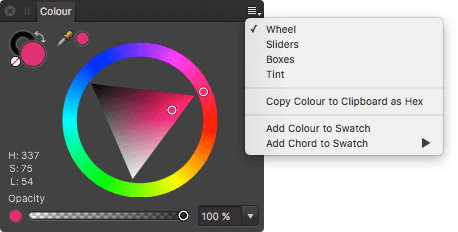
There is still a thing in the menu that allows you to add samples to a few colors, based on the current. Very useful — can be from packs so many shades to choose some suitable.
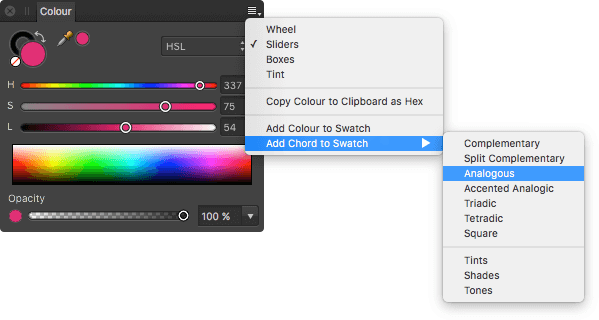
the
Samples (Swatches)
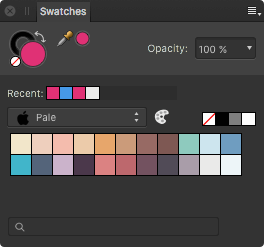
Very similar to the functionality of the panel in Illustrator.
The "x" to switch between fill/stroke.
Pipette, again, peculiar, and this peculiarity is inconvenient: it is first necessary to get the color, then it will appear near the pipette and then this color can be used to fill or stroke. By pressing I or Alt nothing happens, if the chosen tools do not brush it with "Alt" is able to switch on the pipette.
In the line "Recent" shows all of the colours in the current document. There's always black, gray and white colors.
Below is a list with palettes (these screenshots open my "custom" — "Pale"). Palettes are of three types: document palette, palette program, system palette. The document palette is saved with the file and not available anywhere else. The palette is available in any document — it "abiprogrammi". The system palette is accessible from any program on the Mac in ColorPicker.
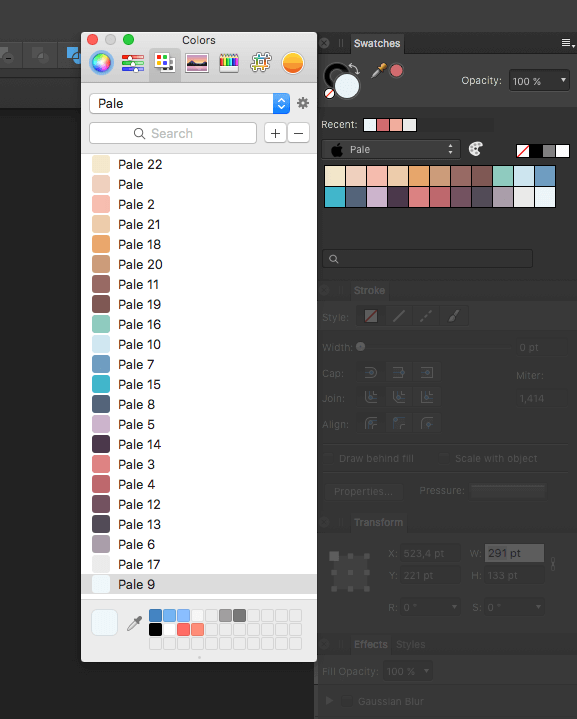
in General, the system ColorPicker — very useful handy thing and I chase him "in the tail and in a mane". In particular, very useful to throw him one color (or here, as above, to make the system palette in Designer) and then use those colors in other programs. So I'm doing the "General" palette for the Sketch of Pixelmator and Affinity Designer. For coders: in Sablaym the Text is also useful. And you can still keep ColorPicker just as standalone program.
In the panel, you can create global color.
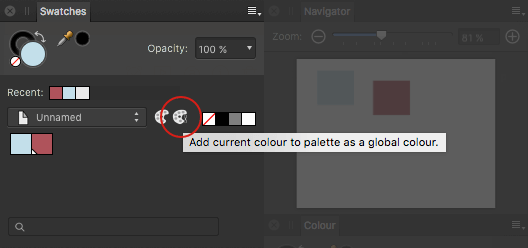
Global color you can change the sliders, or just replace with another from the palette
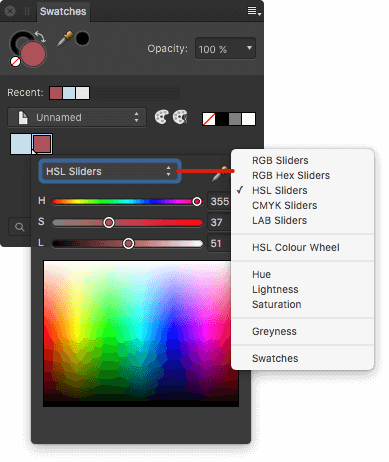
There is a built-in palette Pantone:

From the menu panel you can add colors, palettes, delete, and rename palettes create palette from other documents, to customize the appearance of samples to export this or import the palette (in native format .afpalette)
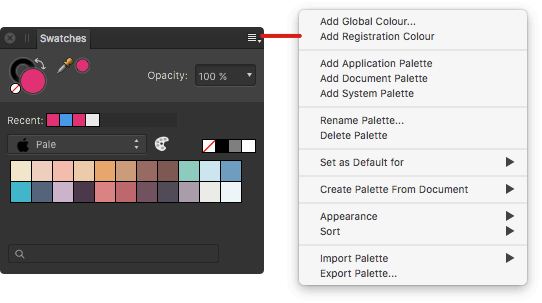
Each sample has a context menu
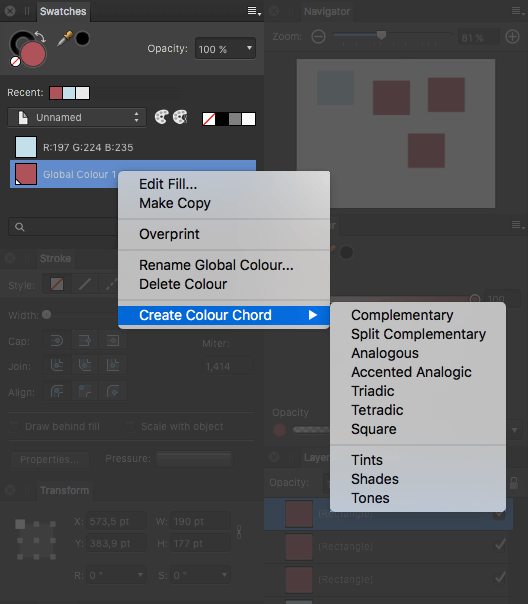
the
Character (Character)
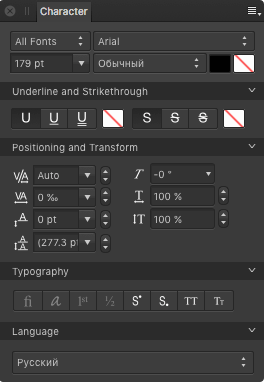
The obvious options, will not write — they are all programs the same. Talk about obvious.
A list of categories of fonts. Categories and smart folders from the system font programs. If something changed in the font, changes the Designer will tighten only after a restart.
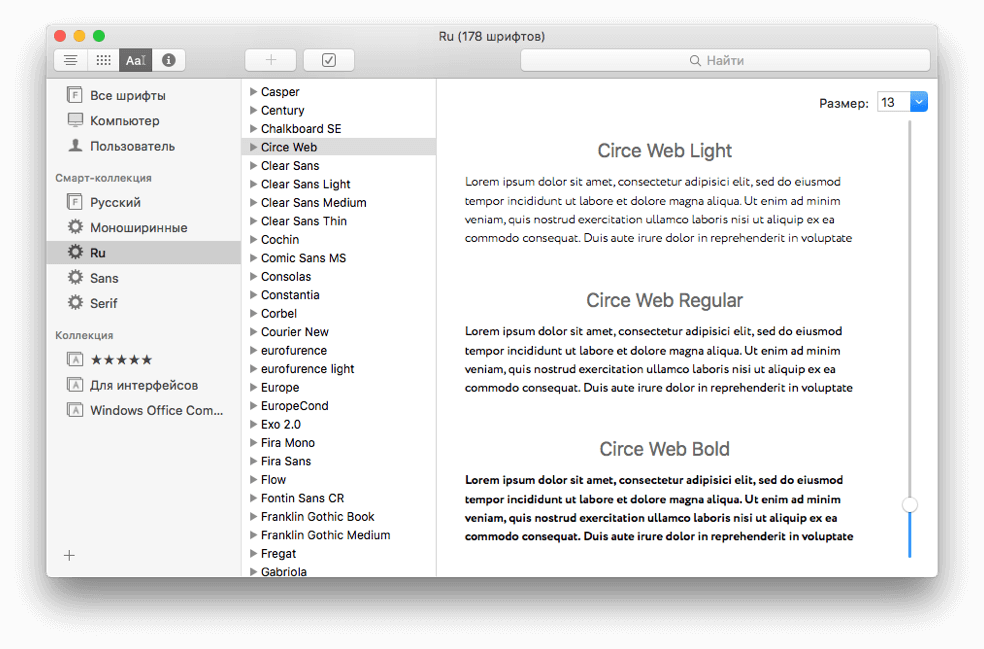
Then the font size. Units can be set in the document settings (File->Document Setup...)
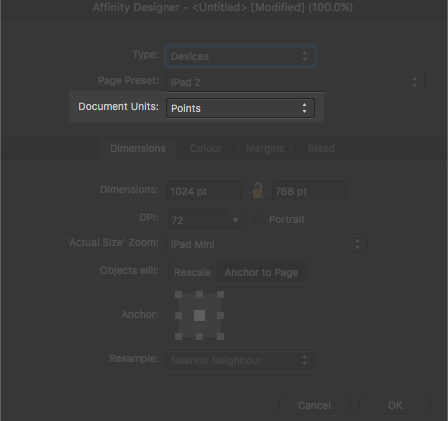
For underline and strikethrough you can specify a separate color. The default color of the text, of course.
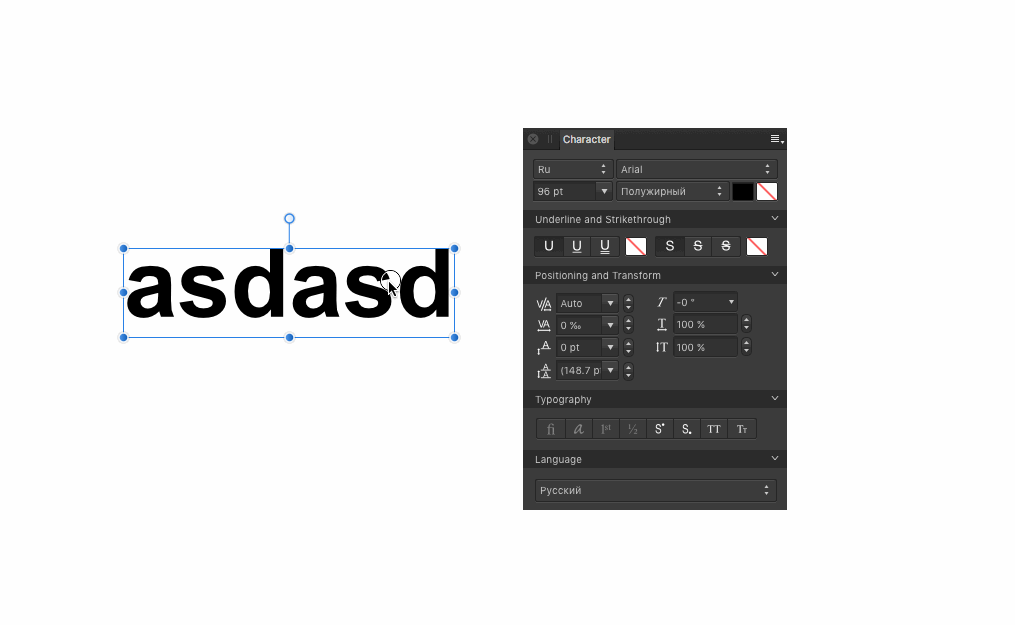
If after entering text, press Cmd+Enter, the text is converted to curves (it's a bit annoying, because old habits die hard, sometimes I press). Just to get out of text editing, press Esc.
Designer immediately on mouse over "preparative" the end result, when you change some parameters in the text.
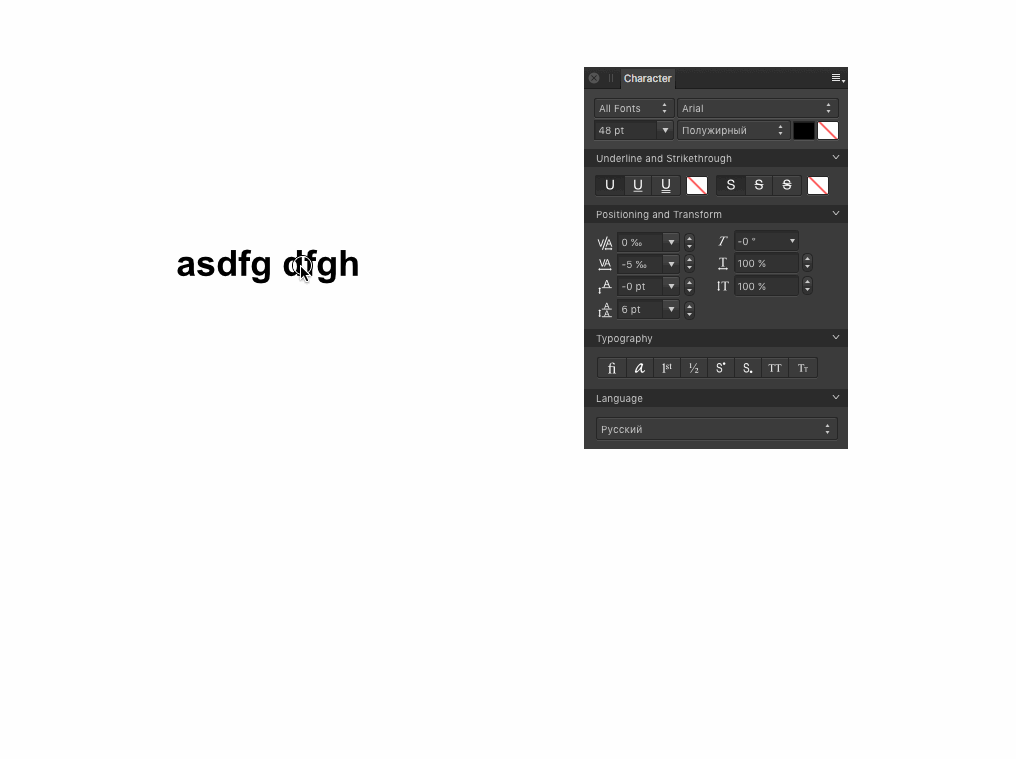
the
Paragraph (Paragraph)
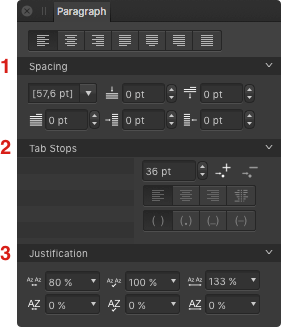
I have not found how to turn a linear text into a paragraph and I suspect that there is no such function. So just focus, the writing you do, or paragraph.
Top — align the paragraph.
1 — Group "Spacing": the height of lines, top margin, bottom margin, indent first line, left indent, right indent.
2 — a Group "Tab stops": the indentation of the text block after pressing "Tab". By default 36 points, you can define your own.
In the example below, first press "Tab" move the cursor to 10 points, the second 50, the third is another 200.

Also there are settings for the boxes after the indent and the alignment marks instead of a space (space, dot, underscore or hyphen).
3 — a Group of "Justification" is useful for aligning text across the entire width (and this anywhere except in print, it is better not to do it). Top to bottom left to right: the minimum distance between words, the minimum distance between symbols, the desired distance between words, the desired distance between the letters, the maximum distance between words, the maximum distance between the letters.
the
Export persona
the
Fragments (Slices)
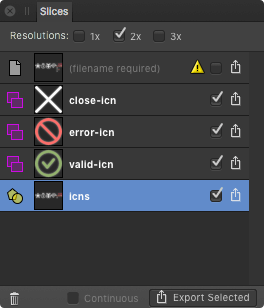
Contains all the fragments that are generated automatically (here I have "filename required") manually. The type of fragment that shows the corresponding icon.
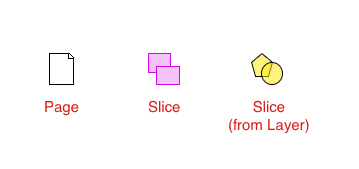
Top panel choose a picture resolution for export 1x, 2x or 3x. You can export all at once — if you choose ticks all the fragments and click "Export selected", or one — click "Export" next to the desired selection.
Downstairs there is a useful checkbox is "Continuous". Only works after the first export, and before that "zapisany". If you select this checkbox, then all changes in the file will be automatically exported to the ACC. fragments. Ie you drew the sprite of icons, smashed into fragments, exported once, and then click the check box "Continuous" and then, if you have something to edit in the icons, they have exported themselves after you save the file. There's an awkward moment — after the file is closed and re-open the magic checkbox is disabled and all you need to do.
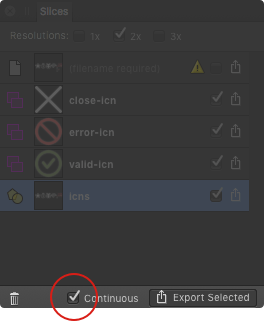
the
export Options (Export Options)
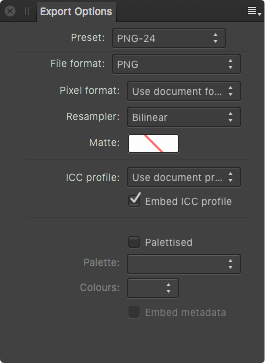
Here in the words to paint nothing — all, I think, be seen by the names of the parameters. If the file has multiple fragments, the parameters you choose for each their own. Options — a great many + you can save your settings.
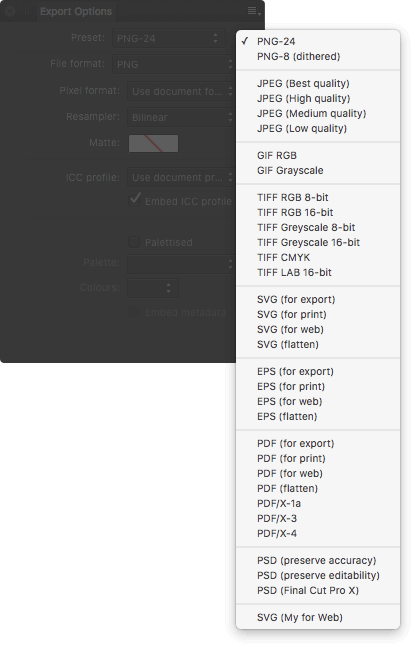
To make your preset, you must first select a built-in, then anything in it to change, and then all of this can be saved as a new setting ("Create Preset...")

the
Layers (Layers)
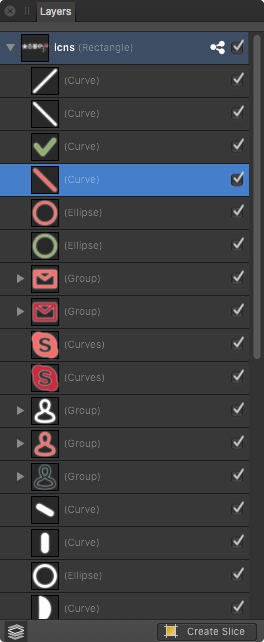
In the export mode, the layers panel allows you to choose to enable/disable layers and create fragments. Nothing more. If a layer is exported, it displays an icon (to the left of the checkbox).
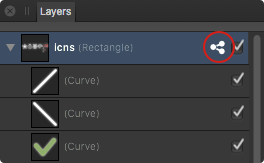
the
epilogue
That's about it. In General I have a lot of positive impressions and a little negative. As a working tool — is quite good. Maybe someone of you will have after Illustrator somewhere perepilichny, but only to minor details.
coming Soon on Windows, incidentally.
In the splash screen illustration of an "Ice Lolly Guy" by Pocketstudio.
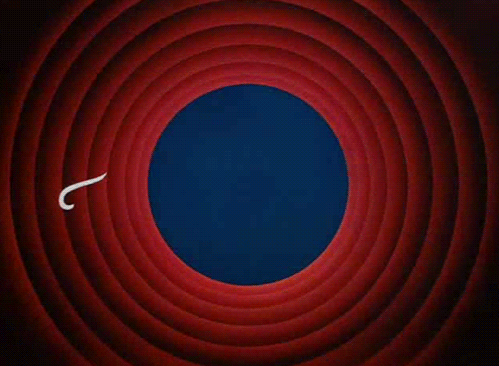
Комментарии
Отправить комментарий